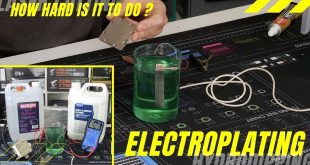Born from the radioactive dust of the Manhattan project, Sandia started life for real in 1948 as a focused laboratory whose prime area of interest was to support/create/develop the parts of nuclear weapons that were not nuclear. While other labs would focus on increasing the power of warheads etc, Sandia was looking at things like safety, reliability and future disposal. On 12th September, it will open the doors on its present research projects – but what will we find?
It was Robert Oppenheimer who first suggested that the non-nuclear parts of nuclear weapons should be dealt with by a separate organisation. In 1945, its forerunner, Z-Division, was born and by 1949 the name had changed to Sandia and it had its first permanent buildings. For almost 80 years, Sandia has been recruiting some of the world's smartest minds and, as its mission evolved, it has achieved some notable milestones.
During weapons testing, parts of the product under investigation could end up being spread across a huge area of the test site. Sandia scientists developed techniques to help track down the missing parts, and some of these techniques are still being used today by crash team investigators.
All of this work required huge compute power – and Sandia has pioneered a lot of clever projects in this area.
For example, in 1977, the US government decided that it needed to find ways for multiple research labs to share work and data – and the SLATEC open source library for Fortran was born – enabling scientists to draw upon more than 1,400 pre-written routines.
Sandia's love for powerful processing systems has meant that, several times, the world's most powerful computer has been sitting one of its labs. For example, in 1996, Sandia worked with Intel to create the world's first Teraflop computer – known as ASCI Red. It was so far in advance of anything else the world had ever seen, that it remained the fastest computer on the planet for more than 3 years. What was more remarkable, was that ASCI Red was built from components that were readily available in the market.
When you check Sandia's achievements, you get a real sense of ‘geeks gone wild' – pushing back the frontiers and seeing what's possible – purely from a research point of view. For example, when the Sandia chaps decided to do work with X-Rays, they naturally created the world's largest X-Ray generator, known as the Z-Machine. When fired, this device can – for a fraction of a second – generate more electricity that the rest of the planet combined. Not just ‘more', but 80x more. 290 trillion watts. Impressive stuff.
Here's a little list of other interesting stuff/innovation that Sandia has managed to deliver over the years:-
- First successful tracking and impact-point prediction for an asteroid hitting the Earth
- Injecting single-cell organisms into nano-structures to alter the design during building
- Shoulder-length Kevlar gauntlets to protect soldiers while firing weapons in battle
- Airbags to allow spacecraft to successfully crash land on other worlds
- Super-microscopes that allow doctors to see, in detail, why human cells fail against some diseases while successfully fighting off others
- Development of a process to allow for safe disassembly of the USA's nuclear stockpile
KitGuru was curious to know more about the Sandia open day event and what will be shown. Here's what we know.
Sandia President and Laboratories Director Paul Hommert will open up some of his organisation's latest work to the public at the Embassy Suites in Albuquerque on 12th September. There will be four main areas: Cybersecurity, Energy Security, Nano/Micro-Science and Water.
The Sandia web site's front pages include a lot of pro-USA rhetoric, but as an organisation it seems to do a good job of taking the ‘sideline discoveries' that happen along the way – and turning them into ‘something useful for mankind as a whole'.

KitGuru says: It gives you an idea of where the world is, mentally, that a lab whose primary function for coming into existence was to provide essential support for the American nuclear weapons programme – but whose latest achievements include de-commissioning of warheads and a big push on water. More power to them.
Comment below or in the KitGuru forums.
 KitGuru KitGuru.net – Tech News | Hardware News | Hardware Reviews | IOS | Mobile | Gaming | Graphics Cards
KitGuru KitGuru.net – Tech News | Hardware News | Hardware Reviews | IOS | Mobile | Gaming | Graphics Cards


